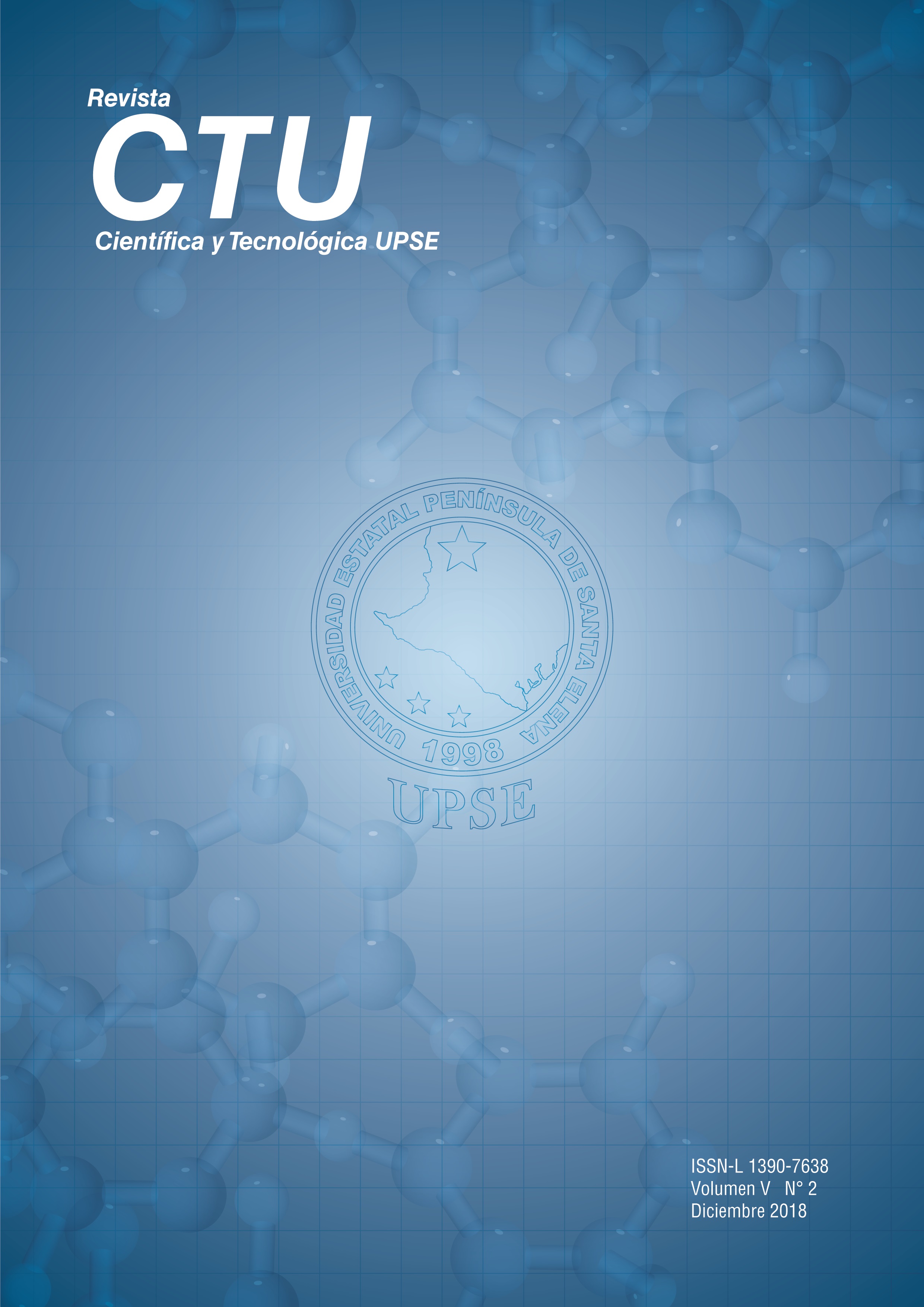Productive performance of watermelon (Citrullus lanatus) under the effect of different irrigation depths, in Santa Elena, Ecuador
DOI:
https://doi.org/10.26423/rctu.v5i2.340Keywords:
irrigation scheduling, irrigation, evapotranspiration, watermelonAbstract
The research was conducted in Manglaralto and Colonche, in the northern part of the province of Santa Elena, under the direction of the Ciap-Upse agricultural research center.The aim of the research was to assess the productive performance of watermelon hybrid Royal Charleston, under different sheets of irrigation in two localities of the peninsula of Santa Elena.The treatments were five irrigation depths, 40, 60, 80, 100 and 120% of the crop evapotranspiration, the statistical design used was randomized complete blocks the treatment means were compared using Tukey 5% probability of error statistical, evaporation is mediated in the tub of evaporation class A, variants of irrigation influenced all of the variables evaluated, generating a progressive increase of production according to the treatments, the crop evapotranspiration was 218 mm in Manglaralto and 377 in spring of Colonche, better treatment is for 120% etc with 109 tonnes per hectare in Manglaralto, however, in spring of colonche production decreased to 75,13 tons per hectare with the same level of irrigation.
Downloads
References
Allen, R., Pereira, L., Raes, D. y Smith, M.. (2006). Evapotranspiración de cultivo. Guía para determinación de los requerimientos de agua para cultivos. Manual de Riego y Drenaje 56. Roma: FAO,2006.
Ayers, R. y Wescot, D. (1994). Calidad del agua de riego para agricultura. Paper de riego y drenaje de la FAO 29 Rev. 1. Roma: FAO,1994.
Cenobio, P., Inzumza, M., Mendoza, S., Sánchez, C., y López, R. (2006). Acolchado plástico de color en sandía con riego por goteo. Terra Latinoamericana, vol. 24, núm. 4, pp.515-520
FAO. Agua y Cultivos. Logrando el uso óptimo del agua en la agricultura. ROMA: FAO, 2002.
INAMHI. Red de Estaciones Meteorologicas. 2017. http://www.serviciometeorologico.gob.ec/red-de-estaciones-meteorologicas/ (último acceso: 24 de noviembre de 2017).
Medrado,H.,Bota,J.,Cifre,J.,Flexas,J.,Robas-Carbo, M.,yGulías,J.(2007).Eficiencia en el uso del agua por las plantas. Investigaciones Geográficas, nº 43; 63-84.
Molina, J. (2010). Automatización y Telecontrol de sistemas de riego. Barcelona: Ediciones Técnicas Marcombo.
Orrala, N. (2016). Efecto de nematicidas biológicos y del portainjerto en la producción de sandía (Citrullus lanatus L.) en Ecuador. Centro Agrícola 43, nº 4, 36-41.
Pérez, A., Pineda, A., Latournerie, L., Pam Pech, W., Godoy, C. (2008). Niveles de evapotranspiración potencial en la producción de chile habanero. Terra Latioamericana 26, nº 1.
Quintal, W., Pérez, A., Latournerie, L., May, C., Ruiz, E., y Martínez, M. (2012) Uso de agua, potencial hídrico y rendimiento de chile habanero (Capsicum chinense Jacq.). Revista Fitotecnia Mexicana 35, nº 2, 155-160.
Roades, J. D., Kandiah, A. M. (1992). Uso de aguas salinas para la producción agrícola. Riego y Drenaje Paper 48.FAO.
Rojas, Manuel (2016). Resistencia a la sequía. http://site.ebrary.com/lib/upsesp/detail.action?docID=10115081 (último acceso: 1 de Diciembre de 2016).
Román, L., Díaz, T., López, J., Watts, C., Cruz, F., Rodríguez, J., Rodríguez, J. (2017). «Evapo-transpiración del cultivo de sandía (Citrullus lanatus).» Terra Latinoamericana 35, nº 1, 41-49.
Downloads
Published
Issue
Section
License
El titular de los derechos de autor de la obra, otorga derechos de uso a los lectores mediante la licencia Creative Commons Atribución-NoComercial-CompartirIgual 4.0 Internacional. Esto permite el acceso gratuito inmediato a la obra y permite a cualquier usuario leer, descargar, copiar, distribuir, imprimir, buscar o vincular a los textos completos de los artículos, rastrearlos para su indexación, pasarlos como datos al software o usarlos para cualquier otro propósito legal.
Cuando la obra es aprobada y aceptada para su publicación, los autores conservan los derechos de autor sin restricciones, cediendo únicamente los derechos de reproducción, distribución para su explotación en formato de papel, así como en cualquier otro soporte magnético, óptico y digital.












